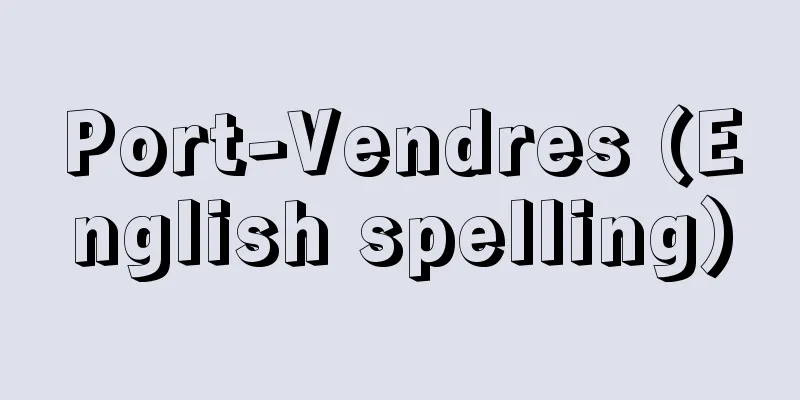Hemoglobin

|
Hemoglobin is a pigment protein found in large quantities in red blood cells of vertebrates that transports oxygen. It is also called hemoglobin and abbreviated as Hb. It is composed of an iron-containing porphyrin ring (heme) and a type of protein (globin), that is, about 4% protoheme (of which 9% iron and 91% protoporphyrin) and about 96% globin. This iron atom has the ability to reversibly bind to oxygen, and plays a role in transporting oxygen in the body. One hemoglobin molecule consists of four polypeptide chains, each of which contains one heme. Therefore, one hemoglobin molecule contains four iron atoms, and one molecule of oxygen binds to each iron atom. Hemoglobin binds oxygen in the lungs and gills, where oxygen pressure is high, and releases oxygen when it reaches tissues, where oxygen pressure is low. If the oxygen saturation of the hemoglobin molecule is plotted on the vertical axis and the partial pressure of oxygen on the horizontal axis, an S-shaped oxygen dissociation curve is obtained. This is due to the cooperativity of oxygen binding to hemoglobin, and is called the allosteric effect. In addition, oxygen release is promoted by a decrease in hydrogen ion concentration (pH), so peripheral tissues with a high carbon dioxide content and low pH tend to release oxygen more easily. The carbon dioxide dissolves in the plasma and is transported to the lungs, and when it is released from the body through pulmonary breathing, the pH returns to normal and hemoglobin binds to oxygen. The decrease in the affinity between oxygen and hemoglobin due to an increase in carbon dioxide partial pressure or a decrease in pH is called the Bohr effect. On the other hand, myoglobin, a pigment protein very similar to hemoglobin, is found in muscles and has a higher affinity for oxygen than hemoglobin, and receives oxygen from hemoglobin and supplies it to muscle activity even in places with relatively low oxygen pressure. Hemoglobin can bind 1.36 milliliters of oxygen per gram, but its affinity for carbon monoxide is more than 200 times that of oxygen, so if the concentration of carbon monoxide is high, it will drive out oxygen, causing an oxygen deficiency and resulting in carbon monoxide poisoning. [Takayoshi Wakagi] Hemoglobin ResearchHemoglobin forms large crystals, so research into it using X-ray diffraction progressed quickly, and its primary, secondary, tertiary, and quaternary structures were determined by Kendrew et al. in the UK between 1960 and 1962. The amino acid sequences of the polypeptide chains have already been determined for the hemoglobin of humans, as well as monkeys, cows, horses, pigs, and other animals, and there are many common parts across a variety of animals that are thought to be particularly important in maintaining the activity of hemoglobin, and the parts that differ between species are attracting attention as being related to the evolutionary process. Furthermore, the relationship between three-dimensional structure and function has also been clarified. [Takayoshi Wakagi] Structure and mutantsIn normal adults, human hemoglobin is a tetramer (an assembly of four monomers bound together) consisting of two α (alpha) chains consisting of 141 amino acids and two β (beta) chains consisting of 146 amino acids, which are close together. However, fetal hemoglobin consists of two α chains and two gamma (gamma) chains, which are slightly different from the β chains, to be favorable for the environment inside the womb. Adult hemoglobin is called hemoglobin A, and fetal hemoglobin F. This hemoglobin F changes into hemoglobin A within a few days after birth, and the synthesis and decomposition of hemoglobin occur simultaneously, causing symptoms similar to jaundice. This type of hemoglobin recombination is also seen when tadpoles metamorphose into frogs. There are also several known mutant strains of hemoglobin A (individuals with DNA base mutations in the normal gene). For example, the hemoglobin of patients with sickle cell anemia (hemochromatosis) seen in blacks in central Africa has a low oxygen-binding capacity and is prone to anemia simply because the sixth glutamic acid from the N-terminus of the beta chain is replaced by valine. This is also called hemoglobin S disease. Since the growth of malaria parasites is inhibited in sickle cells, this anemia makes the patient resistant to malaria. In addition, there is hemoglobin E disease, in which the 26th glutamic acid from the N-terminus of the beta chain is replaced by lysine. There are many known cases of hemoglobin with insufficient or abnormal functions, and more than 250 types of abnormal hemoglobin have already been discovered and registered around the world. Many of these are caused by differences in one or several amino acids as mentioned above, and are hereditary, so it is thought that the cause is due to differences in several bases in the DNA (deoxyribonucleic acid), which is the gene. Pauling of the United States called these hemoglobinopathies molecular diseases. [Takayoshi Wakagi] SynthesisHemoglobin is synthesized in the erythroblast cells of the bone marrow, but in mammals, mature red blood cells release their nuclei and no longer synthesize hemoglobin. Heme is synthesized from only glycine and acetate, after which it takes in iron and combines with globin produced by normal protein synthesis to become hemoglobin. When red blood cells break down, hemoglobin is broken down in the liver, and the porphyrin rings are excreted as bile pigments. The life span of hemoglobin is approximately 120 days. [Takayoshi Wakagi] "Hemoglobin" by Norman MacLean, translated by Yamagami Kenjiro (1981, Asakura Publishing)" ▽ "Biochemistry Lab" edited by Saito Masayuki et al. (1987, Kodansha)" ▽ "Basic Hematology" edited by Nagai Kiyoyasu (1987, World Health News Agency)" ▽ "Continued Biochemistry Experiment Course Volume 8: Blood (Part 1)" edited by the Japanese Biochemical Society (1987, Tokyo Kagaku Dojin)" ▽ "Pathophysiology of Blood" by Archie A. MacKinney, Jr., supervised translation by Shibata Akira (1989, Nishimura Shoten)" ▽ "A Fun and Learning Health Reader by Yamane Shinji (1990, Sanyo Publishing Trading)" ▽ "Why is Oxygen Important to the Body? - We Are Always Short of Oxygen! by Suwa Kunio (1990, Kodansha)" ▽ "New Edition of the Japanese Encyclopedia of Hematology, supplementary volume: Molecular Hematology," edited by the New Edition of the Japanese Encyclopedia of Hematology Publication Committee (1990, Maruzen)" ▽ "The Second Secret of Life: Molecular Mechanisms of Protein Cooperation and Allosteric Control, by Max Perutz, translated by Hayashi Toshihiko and Imamura Yasutada (1991, McGraw-Hill Publishing)" ▽ "Biochemistry of Red Blood Cells, by Mizukami Shigeki (1993, University of Tokyo Press)" ▽ "Proteins: Three-dimensional Structure and Medical Applications, by Max Perutz, translated by Kuroda Reiko (1995, Tokyo Kagaku Dojin)" ▽ "Notes on Molecular Physiology, edited by Nakamura Takao and Yamamoto Yasunobu (1995, Society Publishing Center)" ▽ "Gene Structure and Expression, by John D. Hawkins, translated by Tamiya Nobuo and Tamiya Toru (1995, Tokyo Kagaku Dojin) " ▽ "Standard Biochemistry (1996, Shokabo) ▽ Robert K. Murray et al., Harper's Biochemistry (1997, Maruzen) edited by Ueda Yoshito ▽ Physiology and Biochemistry for Understanding Disease (1998, Kinpodo) edited by Okuda Takumichi et al . Respiratory Disease Nursing Care Manual (1999, Bunkodo) edited by the Nursing Department of the National Tokyo Hospital Sanatorium ▽ Medical Genetics (1999, Nanzando) edited by Matsuda Ichiro, Shinkawa Norio et al. ed. ▽ Matthews' Introduction to Biochemistry (2000, Tokyo Kagaku Dojin) written by H.R. Matthews et al., Fujimoto Daizaburo and Inoue Akira supervised translation by Harano Akio ▽ Abnormal Hemoglobinopathies in the Japanese (2000, Shizenkagakusha) ▽ "Encyclopedia of the Body's Tricks" by Noriko Sugisaki (2001, Asakura Publishing) [References] | | | | | | | | |Acetic | | | | | | | | | | | | | |Source: Shogakukan Encyclopedia Nipponica About Encyclopedia Nipponica Information | Legend |
|
脊椎(せきつい)動物の赤血球中に多量に存在し、酸素を運搬する色素タンパク質で、血色素ともいい、Hbと略記される。鉄を含むポルフィリン環(ヘム)とタンパク質の一種(グロビン)、すなわちプロトヘム約4%(そのうち鉄9%、プロトポルフィリン91%)とグロビン約96%からなる。この鉄原子には酸素と可逆的に結合する能力があり、生体内では酸素運搬の役割を果たしている。ヘモグロビン1分子は4個のポリペプチド鎖からなり、それぞれのポリペプチド鎖には一つずつのヘムが含まれている。したがって、ヘモグロビン1分子には鉄原子が4個含まれ、鉄原子1個につき1分子ずつ酸素が結合する。ヘモグロビンは酸素圧の高い肺やえらで酸素を結合し、酸素圧の低い組織に達すると酸素を遊離する。ヘモグロビン分子の酸素飽和度を縦軸に、酸素の分圧を横軸にとると、S字型の酸素解離曲線を示す。これは酸素のヘモグロビンへの結合に協同性があるためで、アロステリック効果とよばれる。また、酸素の放出は水素イオン濃度(pH)が下がることによって促進されるので、炭酸ガスが多くてpHの低い末梢(まっしょう)の組織では、より酸素を遊離しやすくなっている。その炭酸ガスは血漿(けっしょう)中に溶けて肺に運ばれ、肺呼吸で体外に放出されるとpHはふたたび元に戻り、ヘモグロビンは酸素と結合するようになる。炭酸ガス分圧の増加やpHの低下により酸素とヘモグロビンの親和性が低下するのはボーア効果とよばれる。一方、筋肉中にはヘモグロビンとよく似た色素タンパク質であるミオグロビンがあり、ヘモグロビンよりも酸素との親和力が大きく、比較的酸素圧の低いところでもヘモグロビンから酸素を受け取って筋肉活動に供給している。なお、ヘモグロビンは1グラム当り1.36ミリリットルの酸素を結合するが、一酸化炭素の親和力は酸素に比べ200倍以上もあり、一酸化炭素の濃度が大であれば酸素を駆逐して酸素不足をもたらし、一酸化炭素中毒をおこす。 [若木高善] ヘモグロビンの研究ヘモグロビンは大きな結晶をつくるのでX線回折による研究が早く進み、イギリスのケンドルーらによって1960~1962年に一次、二次、三次、四次構造が確定された。また、ポリペプチド鎖のアミノ酸配列はヒトをはじめ、サル、ウシ、ウマ、ブタなどのヘモグロビンですでに決定されており、各種の動物にわたって共通した部分が多く、それらはヘモグロビンの活性維持にとくに重要な部分とみられ、種によって異なる部分は、進化過程に関連するものとして注目されている。さらに、立体構造と機能との関係なども明らかにされている。 [若木高善] 構造と変異株ヒトのヘモグロビンは正常成人の場合、グロビン分子は141個のアミノ酸からなるα(アルファ)鎖2本と、146個のアミノ酸からなるβ(ベータ)鎖2本が互いに寄り添った形で四量体(4個の単量体が結び付いて1分子となった会合体)を形成している。ところが、胎児のヘモグロビンは胎内環境に有利なように、α鎖二つと、β鎖とは若干異なるγ(ガンマ)鎖とよばれる部分二つとからなる。成人の場合をヘモグロビンA、胎児の場合をヘモグロビンFとよぶ。このヘモグロビンFは出生後数日のうちにヘモグロビンAに変わるため、ヘモグロビンの合成と分解が一度におこって黄疸(おうだん)に似た症状を呈する。このようなヘモグロビンのつくりかえは、オタマジャクシがカエルに変態するときにもみられる。また、ヘモグロビンAにもいくつかの変異株(正常な遺伝子にDNAの塩基の変異を生じた個体)が知られている。たとえば、アフリカ中央部の黒人にみられる鎌(かま)形赤血球貧血症(異常血色素症)患者のヘモグロビンは、β鎖のN末端から6番目のグルタミン酸がバリンになっているだけで酸素結合能力が低く、貧血症をおこしやすくなっている。これはヘモグロビンS症ともよばれる。鎌形赤血球内ではマラリア原虫の成育が阻害されるので、この貧血症はマラリア耐性となる。このほか、β鎖のN末端から26番目のグルタミン酸がリジンに置換されたヘモグロビンE症などもあり、ヘモグロビンの機能が不十分であったり、異常であったりするものが数多く知られ、すでに世界中で250種類余の異常ヘモグロビンが発見、登録されている。このなかには、前記のような1個ないしは数個のアミノ酸の違いによるものが多く、かつ遺伝するので、原因は、遺伝子であるDNA(デオキシリボ核酸)中の数個の塩基の差によると考えられている。アメリカのポーリングは、これらのヘモグロビン異常症を分子病とよんでいる。 [若木高善] 合成ヘモグロビンの合成は骨髄の赤芽球細胞で行われ、哺乳(ほにゅう)類の場合、成熟赤血球は核を放出してしまうため、もはやヘモグロビンは合成されなくなっている。ヘムはグリシンと酢酸だけから合成され、その後に鉄を取り込み、通常のタンパク合成でつくられたグロビンと結合してヘモグロビンになる。赤血球が崩壊するとヘモグロビンは肝臓で分解され、ポルフィリン環は胆汁色素となって排出される。なお、ヘモグロビンの寿命は約120日である。 [若木高善] 『ノーマン・マクリーン著、山上健次郎訳『ヘモグロビン』(1981・朝倉書店)』▽『斉藤正行ほか編『生化学実習』(1987・講談社)』▽『永井清保編著『基本血液病学』(1987・世界保健通信社)』▽『日本生化学会編『続 生化学実験講座第8巻 血液(上)』(1987・東京化学同人)』▽『Archie A. MacKinney, Jr. 著、柴田昭監訳『血液の病態生理』(1989・西村書店)』▽『山根至二著『楽しく学ぶ健康読本』(1990・三洋出版貿易)』▽『諏訪邦夫著『酸素はからだになぜ大切か――いつも酸素は不足している!』(1990・講談社)』▽『新版日本血液学全書刊行委員会編『新版 日本血液学全書・別巻 分子血液学』(1990・丸善)』▽『マックス・ペルツ著、林利彦・今村保忠訳『生命の第二の秘密――タンパク質の協同現象とアロステリック制御の分子機構』(1991・マグロウヒル出版)』▽『水上茂樹著『赤血球の生化学』(1993・東京大学出版会)』▽『マックス・ペルツ著、黒田玲子訳『タンパク質――立体構造と医療への応用』(1995・東京化学同人)』▽『中村隆雄・山本泰望編『分子生理学ノート』(1995・学会出版センター)』▽『John D. Hawkins著、田宮信雄・田宮徹訳『遺伝子の構造と発現』(1995・東京化学同人)』▽『有坂文雄著『スタンダード 生化学』(1996・裳華房)』▽『Robert K. Murrayほか著、上代淑人監訳『ハーパー・生化学』(1997・丸善)』▽『奥田拓道ほか編『病気を理解するための生理学・生化学』(1998・金芳堂)』▽『国立療養所東京病院看護部編著『呼吸器疾患看護ケア・マニュアル』(1999・文光堂)』▽『松田一郎監修、新川詔夫ほか編『医科遺伝学』(1999・南江堂)』▽『H・R・マシューズほか著、藤本大三郎・井上晃監訳『マシューズ生化学要論』(2000・東京化学同人)』▽『原野昭雄著『日本人の異常ヘモグロビン症』(2000・自然科学社)』▽『杉崎紀子著『身体のからくり事典』(2001・朝倉書店)』 [参照項目] | | | | | | | | | | | | | | | | | | | | | | | | |出典 小学館 日本大百科全書(ニッポニカ)日本大百科全書(ニッポニカ)について 情報 | 凡例 |
<<: Hemochromatosis (English spelling) h(a)emochromatosis
Recommend
Zebrzydowski, M.
…However, the king ignored the opposition. As exp...
Flower Friendship Association
...In the Meiji period, after Rien, there was a t...
Oobanotombosou - Oobanotombosou
A perennial plant of the orchid family (APG class...
Fujiwara no Michinaga
A politician in the mid-Heian period, he was at t...
Virchow
Also known as Virchow. German pathologist and poli...
Shimotsuma Shoushin
[Born] Tenbun 20 (1551) [Died] May 15, 1616 (Genna...
Iridori - Iridori
…In today's Japan, hunting laws restrict the ...
Schiele - Egon Schiele
Austrian painter and draftsman. Born in Tulln on ...
Aleurites montana (English spelling) Aleuritesmontana
… [Ken Ogata]. . … *Some of the terminology that ...
Akatsuki Haya
A priest and Buddhist scholar of the Otani sect o...
Pronephros
… The kidney is thought to have originated from t...
Voluntary retirement - Igantaishoku
In a broad sense, it refers to all cases in which...
Astrid Lindgren
A Swedish female children's author. Born in V...
Mina (English spelling)
...The place where Ibrahim stood, inside the Kaab...
Fruiting body
This refers to the spore-forming bodies of fungi,...









